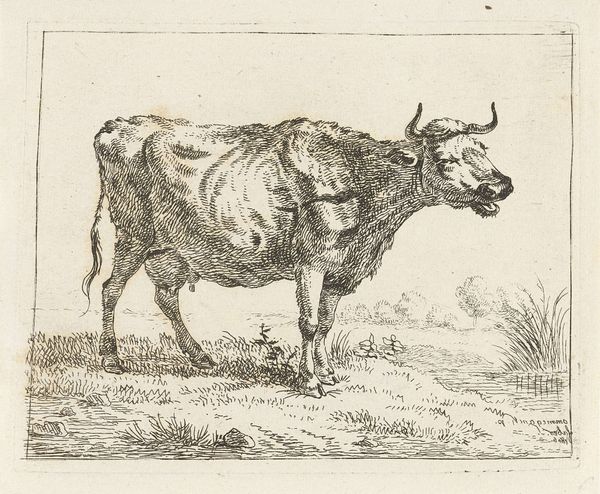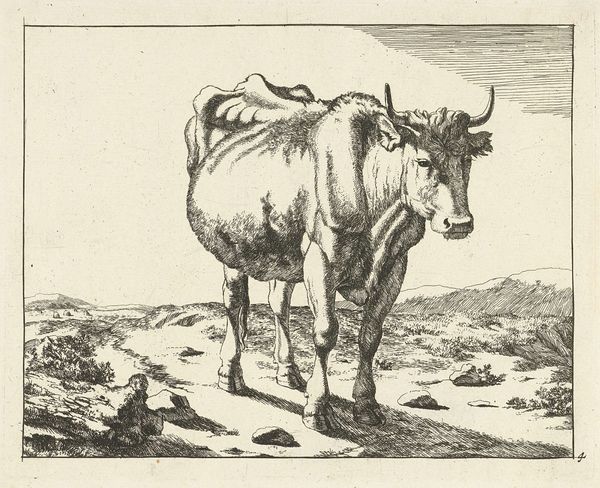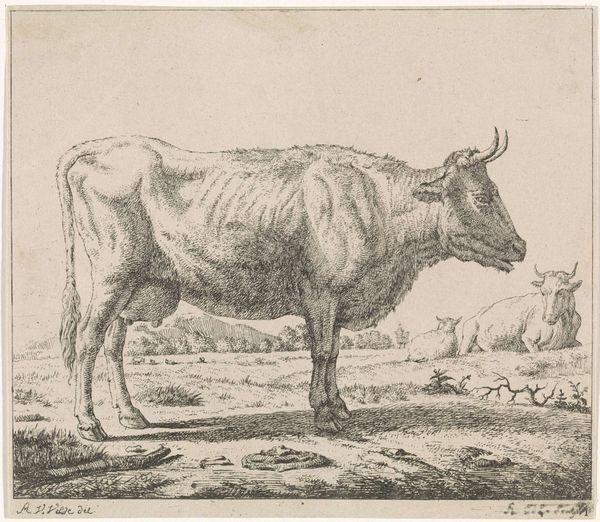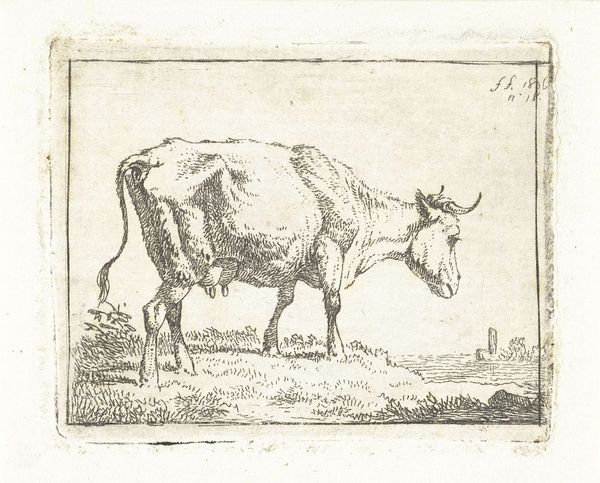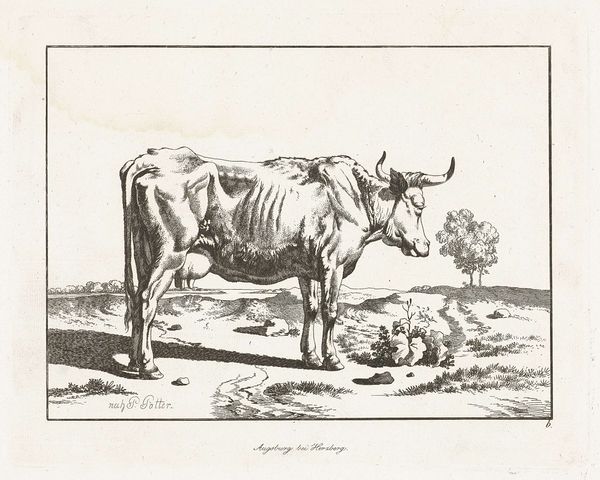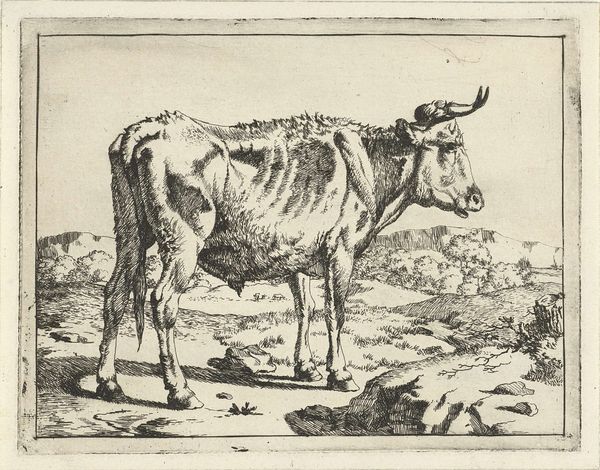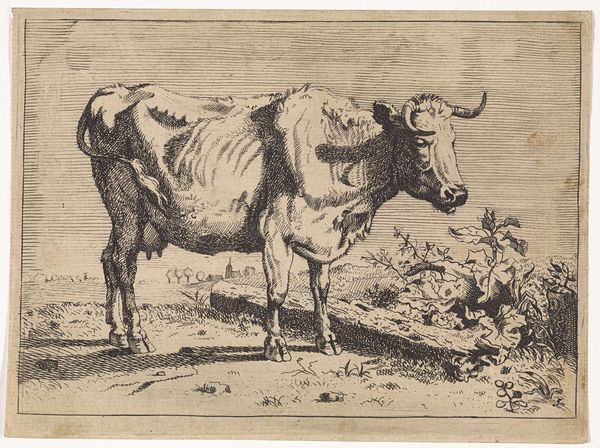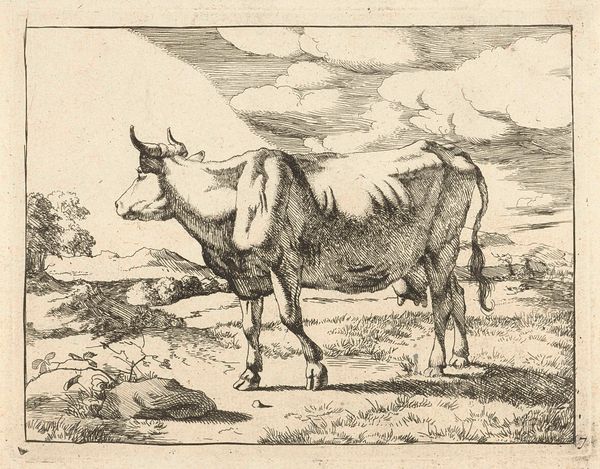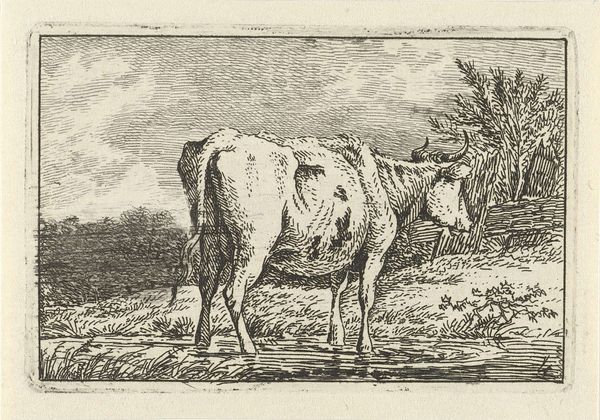
drawing, print, etching, engraving
#
drawing
#
baroque
#
animal
# print
#
etching
#
landscape
#
engraving
#
realism
Dimensions: height 144 mm, width 172 mm
Copyright: Rijks Museum: Open Domain
Editor: We’re looking at "Stier, staand naar rechts, met vogels," or "Bull, Standing Right, with Birds" by Marcus de Bye, created sometime between 1657 and 1761. It's an etching, and the detail is remarkable. What really strikes me is how ordinary it feels, like a snapshot of rural life. How do you interpret the depiction of such a mundane scene? Curator: It's crucial to remember that this "snapshot," as you call it, is very deliberate. Landscape and animal depictions gained popularity as symbols of Dutch prosperity and rural virtue. The bull represents strength, agriculture, and the control the Dutch had over their land. Consider the art market during the Dutch Golden Age; prints like this were incredibly accessible and helped to spread these ideologies. Do you see any indications of that control or prosperity? Editor: Now that you mention it, there's a certain placidity about the bull, almost like it’s posing for us. It feels posed in front of its domain, so to speak. I see your point about the messaging. But is the scene "ordinary," though? Were these kinds of images more idealized then? Curator: That’s perceptive. While the print does suggest realism through its detail, it is most definitely an idealized version of reality. De Bye might be subtly reinforcing ideas of stability and bounty during a period of considerable social and economic change. The very act of immortalizing a bull transforms it from a farm animal to a symbol of Dutch identity. How does this reframing affect your view of the work? Editor: It changes everything! It’s not just a bull; it’s about projecting power and a vision of an ordered society. I will consider context more moving forward. Curator: Indeed. Art like this reminds us that seemingly simple images often carry complex social and political meanings and encourages us to question the values being presented.
Comments
No comments
Be the first to comment and join the conversation on the ultimate creative platform.

